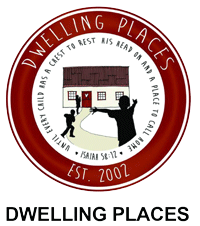Our Vision
A world where every child has a place to call home and is empowered to reach their full potential within a safe family and community setting.
What we do;
OUR MISSION
Rescue, Rehabilitate, Reintegrate Educate and Advocate for street-connected children and abandoned babies to enable them to reach their full potential.
OPERATING STRUCTURE
The Dwelling Places operating structure is built around a matrix model of Programs and Services.
A program is a set of activities and procedures that seek to fulfil specific objectives for a clearly defined group of people. The activities and procedures are specific to the program. Examples of Programs would be Restore and Rebuild.
Services are support activities that make Programs more effective. The activities and procedures are general and cut across all the groups of people and programs we work with. Examples of a Service would be Health Care, Education and Administration.
1. Rescue: We conduct a variety of activities to build relationships with street-connected children and rescue the vulnerable ones, (between 3 and 12 years old) for care and protection.
2. Rehabilitation: We offer temporary accommodation, food, catch-up education, medical care, counselling, emotional and spiritual nourishment for the child.
3. Reconciliation: We conduct family tracing and reconciliation to resolve any issues that caused family separation, and ensure that every child is placed in a safe and loving community.
4. Reintegration: Successful reconciliation leads to sustainable resettlement including placement in schools and regular follow-ups.
5. Family Empowerment: We work with the resettled children and their families to ensure sustainability after resettlement by connecting them to existing local social, and economic networks. We also provide income generating activities to the most vulnerable families and children.
6. Education: This is our strategy for sustainable reintegration. Supporting a child to stay in school will keep them off the streets. We provide school fees, scholastic materials, and other basic school requirements.
7. Advocacy and Networking: We are active members of CRANE, UCRNN, CATIP-U, Consortium for street Children. It is through these networks that we advocate for street connected children. Activities done here among others include; Capacity Building, organising media engagements and Public Awareness Campaigns.

